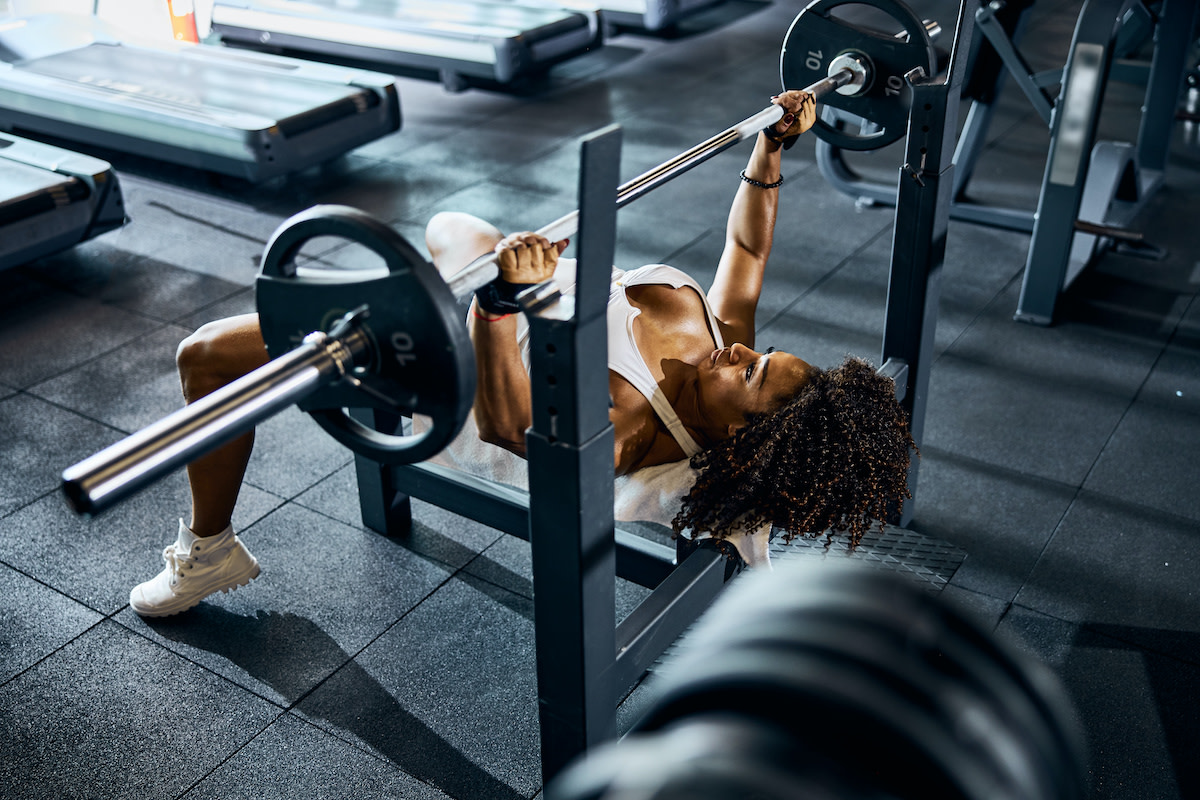Bench Press Exercise Guide: How to Master Bench Presses
Written by MasterClass
Last updated: Jun 7, 2021 • 4 min read
Whether you’re an experienced powerlifter or a novice lifter, the bench press is a great weightlifting exercise to include in your strength-training program.
Learn From the Best
What Is a Bench Press?
A bench press, also known as a barbell bench press or a flat bench press, is a weight-training exercise that activates muscles throughout your upper body. Perform bench presses by lying on your back on a flat bench with your eyes aligned directly underneath a weighted barbell. Grab the barbell with a shoulder-width grip and unrack it carefully. Lower the barbell towards the middle of your chest just above your sternum and then lift it again.
3 Bench Press Benefits
Including bench pressing in your powerlifting routine can have several benefits.
- 1. Bench presses can help you build bigger pectoral muscles. The bench press is an effective chest exercise, activating chest muscles like the pectoralis major.
- 2. Bench presses can increase your upper-body strength. Along with your pecs, bench presses work muscles throughout your upper body—including your anterior deltoids and triceps.
- 3. Bench presses are a versatile bodybuilding exercise. You can adjust your bench press exercises according to your fitness level. Start small and slowly work your way up to heavy weights. If you’re a novice bodybuilder, remember to bring a spotter to help you. With practice, proper benching form can help with other compound exercises like deadlifts and bodyweight push-ups.
How to Do a Bench Press With Proper Form
For bench presses, begin by using a barbell with a weight that you can control for 2–3 sets of 6–12 repetitions. Choose a weight that allows you to maintain good technique throughout all sets and repetitions.
- 1. Lie faceup on a bench with your feet on the floor and your upper back in contact with the bench. Your eyes should be directly underneath the barbell. Maintain a neutral head and neck position. Your chin should remain tucked throughout the movement, as if you were holding an egg under your chin.
- 2. Engage your core and maintain a neutral spine. Your shoulder blades should be slightly down and back. Your upper back should remain tight and stable throughout the entire set.
- 3. Grab the barbell with a grip that is slightly wider than your shoulders. Rotate your shoulders outward to engage your lats.
- 4. Without losing your alignment, lift the barbell off the rack. Your wrists should be neutral and in line with your elbows. All repetitions should begin from this position.
- 5. Slowly bend your elbows to lower the barbell towards the middle of your chest. Lower the barbell until your upper arms are in line with your back. Your elbows should be at a 45-degree angle. Pause at the bottom position.
- 6. Squeeze your chest and begin to straighten your elbows to lift the barbell back to the starting position. Squeeze your chest and triceps at the top of the movement while maintaining a slight bend in your elbows.
- 7. Repeat for your desired number of repetitions.
6 Bench Press Variations
Once you’ve practiced the standard bench press, try one of these six variations.
- 1. Decline bench press: Perform this variation by adjusting the bench so that your upper body is on a downward slope. Decline bench presses activate your lower pecs more than standard bench presses.
- 2. Narrow-grip bench press: Also known as the close-grip bench press, this variation uses a narrower grip than a traditional bench press, putting more emphasis on your triceps and forearms.
- 3. Incline bench press: To practice this variation, elevate your upper body on an incline bench to put focus on your upper pecs.
- 4. Dumbbell bench press: Also known as the dumbbell chest press, this variation uses a pair of dumbbells rather than a barbell, allowing you to go through a greater range of motion.
- 5. Wide-grip bench press: By using a wider grip than a standard bench press, this variation puts even more emphasis on your chest muscles.
- 6. Glute-bridge bench press: Perform this variation by resting just your shoulders on a bench and holding your lower body up with your legs on the floor while squeezing your glutes.
How to Work Out Safely and Avoid Injury
If you have a previous or pre-existing health condition, consult your physician before beginning an exercise program. Proper exercise technique is essential to ensure the safety and effectiveness of an exercise program, but you may need to modify each exercise to attain optimal results based on your individual needs. Always select a weight that allows you to have full control of your body throughout the movement. When performing any exercise, pay close attention to your body, and stop immediately if you note pain or discomfort.
In order to see continual progress and build body strength, incorporate proper warm-ups, rest, and nutrition into your exercise program. Your results will ultimately be based on your ability to adequately recover from your workouts. Rest for 24 to 48 hours before training the same muscle groups to allow sufficient recovery.
Want to Dive Deeper Into Your Wellness Journey?
Throw on some athleisure, fire up a MasterClass Annual Membership, and get ready to sweat it out with exclusive instructional videos from Nike Master Trainer and GQ fitness specialist Joe Holder. Want to improve your cardiovascular endurance? Give Joe’s HIIT workout a go. Trying to get a little swole? He’s got a strength training workout for that. From fitness tips to nutrition hacks, Joe will have you feeling healthier in no time.
